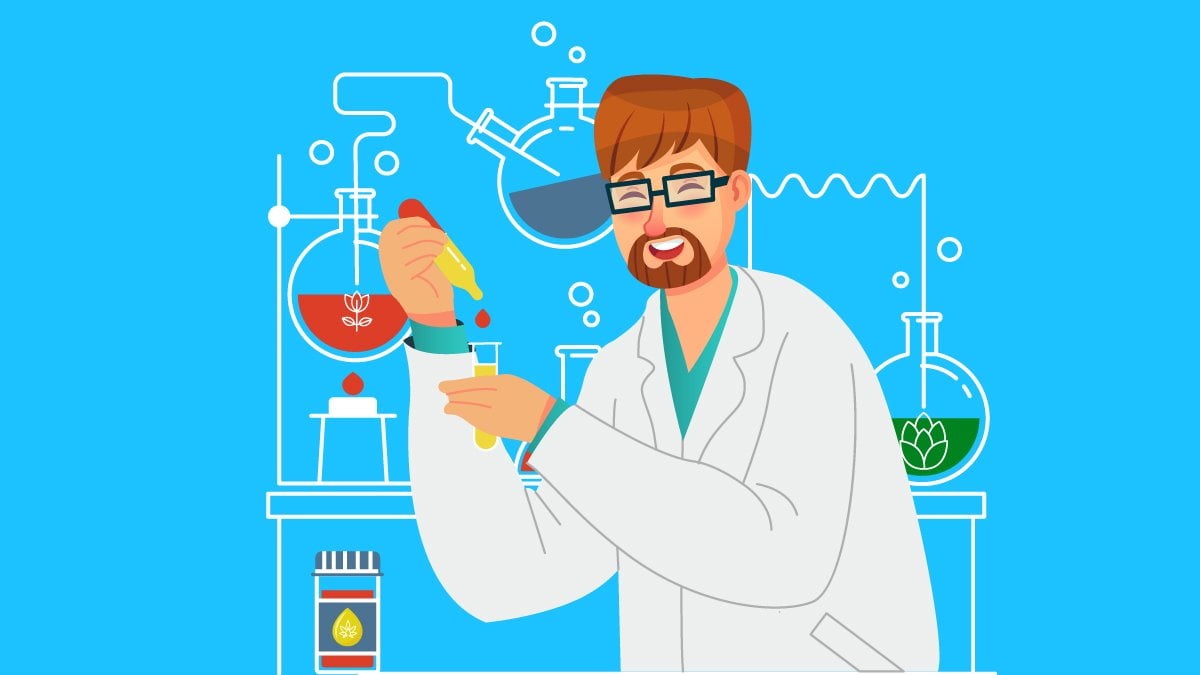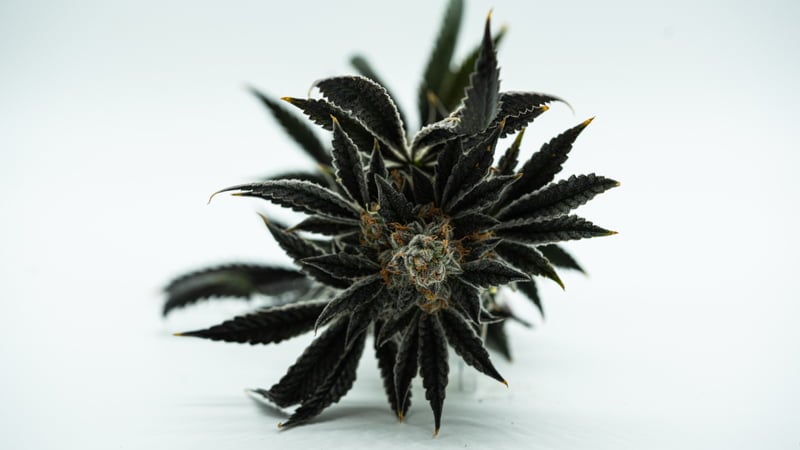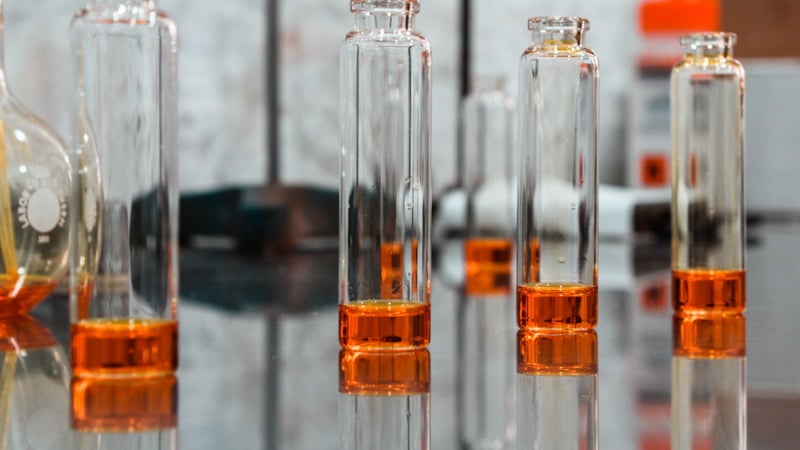What Are Cannabis-Derived Terpenes?

A few years ago, terpenes were the noobs in the cannabis game. Today, terpenes are king. Products made without them feel inferior in both flavor and effect profile.
Scientists, therapists, doctors, and everyday cannabis fans are starting to take these compounds seriously.
Here is an in-depth look at cannabis-derived terpenes and what makes them different from botanical-derived terpenes and synthetic terpenes.
What are Cannabis-Derived Terpenes?
Cannabis-derived terpenes (CDT) are exactly what you would expect — terpenes that come strictly from cannabis plants.
The plant generates and stores these terpenes in the trichomes, the sparkling, sticky crystals on the leaves and buds. The specific terpenes found in cannabis called the terpene “profile” are different for each strain.
The mix of terpenes gives each strain its characteristics and is largely responsible for your preferences for one over another.
Through breeding, cannabis growers have created strains with particular terpene profiles. That’s why one strain may support sleep, and another may support creativity or focus.
24 Most Common Terpenes Found in Cannabis
Cannabis contains well over 200 terpenes — however, just 20 or 30 make up the vast majority of the terpene concentrations in the plant. Each strain of cannabis has a different ratio of these terpenes, which provides a distinct aroma, flavor, and effect profile.
Here are the most common cannabis-derived terpenes:
- Pinene
- Beta-Caryophyllene
- Bisabolol
- Borneol
- Camphene
- Caryophyllene
- Citral
- Delta-3-Carene
- Eucalyptol
- Geraniol
- Geranyl-Acetate
- Guaiol
- Humulene
- Isopulegol
- Limonene
- Linalool
- Myrcene
- Nerolidol
- Ocimene
- Phellandrene
- Sabinene
- Terpineol
- Terpinolene
- Valencene
The Benefits of Cannabis-Derived Terpenes
One benefit people talk about is the “entourage effect,” which means that the non-THC cannabis compounds work hand-in-hand with the THC to create a strain’s specific psychoactive effects. The entourage effect of each plant is based on the cannabis compounds and the specific terpene profile of the strain. The great news is, some cannabis growers are now testing their buds for terpenes and amounts.
For instance, someone who may get Cannabinoid Hyperemesis Syndrome may get less nausea from a strain that contains terpenes with antiemetic properties. Someone who gets paranoia after using cannabis may prefer a strain with anti-anxiolytic terpenes.
Different terpene profiles also affect the taste. You may like the flavors in one but not the other — that’s the terpenes holding court with your taste buds.
The Drawbacks of Cannabis Terpenes
One of the biggest disadvantages of using any terpene therapeutically is that we don’t know enough about them yet. Cannabis was only recently legalized and only in a few states, so getting federal grants to study terpenes to the extent necessary for full understanding will take some time.
Another drawback is delivery. If you get your favorite terpene from cannabis by smoking it, it’s hard to know how much you’re getting, even if you know the strain and the typical terpenes found in it. Cannabis-derived terpenes are also a little more expensive and may irritate tissues.
If cannabis is not legal in your state, the terpenes may also be illegal. While this is a subject for another day, it will pay to check your local laws.
What are Botanical Terpenes?
A botanical terpene is a natural terpene found in non-cannabis plants and their fruiting bodies. These terpenes are the same as cannabis-derived terpenes, such as pinene, linalool, caryophyllene, etc. The amount of each resident terpene will vary with the plant, so we can’t give you a list of the most prominent terpenes here — it’s beyond the scope and breadth of this article.
What we can tell you is that these terpenes will have no psychoactive effects. For instance, if you want a terpene for sleep, like myrcene, and don’t want to use cannabis, you can use a botanical terpene instead. Some myrcene is derived from hops, for instance, one of the main ingredients of beer.
Common Botanical Terpenes
All the terpenes found in cannabis can be found in other plants. A good internet search will help you find some great charts on the most prevalent terpenes and where to find them in nature. You will know how to look for your botanical terpenes and know what to expect when you get them.
For instance, pine trees and orange peels have large amounts of pinene. Great! If you need pinene, you’ll be getting a product that likely smells like pine, orange, or a combination.
The Benefits of Botanical Terpenes
Besides having no psychoactive effects, these terpenes are often lower cost than cannabis-derived terpenes. This does not imply “cheaper” in the quality sense because they are the same molecules.
Botanical terpenes can actually bind to cannabinoid receptors and may be able to help cannabinoids cross cell membranes for better effectiveness. Because there are no laws against them, botanical terpenes are a great asset in states where marijuana is still (cue eye roll) illegal.
The Drawbacks of Botanical Terpenes
For those who like the taste of cannabis, you won’t get the same flavors from botanical terpenes. They are more purely flavored, meaning that caryophyllene will taste like caryophyllene instead of the terpene with some earthy, musky, or piney notes. If you don’t like the taste of cannabis, this is an actual advantage.
The other drawback is also related to flavor. These can be strong, and you might need to dilute them to make them palatable. However, that doesn’t stop some companies from adding too much terpene content to enhance the entourage effect.
What Are Synthetic Terpenes?
A synthetic terpene is made in a lab. Period. There is no middle ground here. It’s either cannabis-derived, botanical-derived and called cannabis-related (or non-cannabis-derived), or made in a lab and called synthetic (sometimes called cannabis-related). While it looks like a bit of a word salad, there is actually a lot of difference because of legal classification.
Synthetic terpenes are not sourced from plants.
Benefits of Synthetic Terpenes
While some believe that synthetic terpenes are more reliable in quality and more easily produced in the lab, the value of that is arguable. Cannabinoid and botanical terpenes usually have safety data sheets so that consumers can decide for themselves, and cannabis companies that use terpenes in their products have a certificate of analysis (COA) from each test batch to provide to the consumer, so there is really no competitive point here.
Drawbacks of Synthetic Terpenes
While scientists may have ongoing collections of reliable data as the manufacturing processes mature, a Portland State University study found damning evidence of harmful compounds in heated synthetic terpenes. The study discovered that at temperatures required for dabbing, these terpenes released destructive material like benzene.
The study did not compare synthetic terpenes to cannabis-derived or botanical terpenes.
What Exactly is a Terpene?
When you smell a flower, catch the scent of pine in the morning on a camping trip, or smell a stink bug, you’re smelling terpenes. They can smell great— or in the case of the stink bug, bad — but life would be very different and certainly not as fragrant without them.
Even if you’re not a science nerd, terpenes are fascinating. They are compounds of the formula (C5H8)n, and there are around 30,000 of them. All plants (and a few insects and animals) produce terpenes. They are sub-classified based on the number of carbons.
The jobs of terpenes in plants range from attracting beneficial insects and repelling predators to plant-to-plant communications and possibly even cloud seeding.
Some terpenes protect from sun exposure, infections of various kinds and eliminate competition from nearby growing plants. Some insects secrete terpenes for defense, juvenile hormones, and molting hormones. In animals, terpenes often serve as a sex attractant, such as β-springene in the springbok.
Terpenes all have different effects on the body, and when found in combinations, they can counteract or support each other. Here are some terpene effects that are often found in cannabis strains.
1. Terpenes for Sleep Support
Perfect examples of these are linalool, myrcene, nerolidol, terpinene, pinene, and terpinolene have all been noted for sleep support. Scientists have studied some of these to create new ways of helping people with insomnia (3).
2. Terpenes for Energy, Focus, & Anti-Anxiety Support
Lots of people would like an energy kick without the caffeine tremors. Limonene, pinene, β-caryophyllene, and terpineol are commonly associated with mood lift.
3. Terpenes for Pain Support
Caryophyllene is again a ring leader, with bisabolol and humulene bringing up the rear. Moving further into specialties, myrcene could offer care for muscle spasms and other kinds of pain. Myrcene is resident in over 40% of cannabis strains that we’re aware of. One study found linalool exhibited anti-inflammatory properties.
4. Terpenes for Anti-Microbial and Anti-Fungal Support
In a 2019 study, 16 out of 33 compounds studied exhibited antimicrobial activity: eugenol, terpineol, carveol, citronellol, and geraniol, all affecting different bacteria. Other studies found α-pinene, thymol, and menthol exhibit antimicrobial properties. A study in 2010 showed carvacrol and other terpenoid phenols were effective against numerous pathogens.
With tens of thousands more terpenes to choose from, it’s clear that science is just getting started on investigating these beneficial compounds.
CDT, Non-CDT, or Synthetic: Which Source is Best?
All this said, much more research is warranted, whether it’s cannabis, botanical, or synthetic terpenes.
The bottom line is that a terpene is a terpene. Whether limonene is extracted from limes, cannabis or made in a lab, the final product is identical.
We prefer to make our terpenes from cannabis when available or use other natural sources instead. We don’t make any synthetic terpenes.
When shopping for cannabis products, it’s more important to look at the third-party lab tests than differentiate between CDT or non-CDT.
“Some cannabis growers test their buds for terpenes,” says Karen Bolander at AlphaBlue Consulting, a cannabis consulting firm in Ohio. “They report the results in milligrams per gram, so if you smoke a gram of flower, you know what terpenes you’re getting and how much. This helps people who use cannabis therapeutically decide on the best products and strains.”
If you feel like a COA isn’t quite right, you can check with the lab that issued it to the company you bought the product from.
Terpene science is relatively new, so if your spidey sense is tingling, there is probably a reason.




